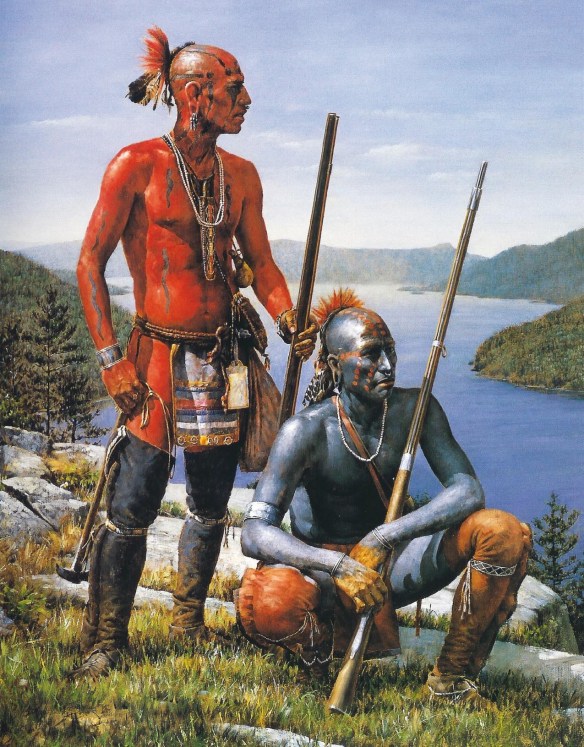
Frontiersmen came to dominate the West in the 1760s and early 1770s by sheer weight of numbers – and an unrestrained appetite for land. Because of the expense of garrisoning the frontier, the British Army withdrew from the West and left only small forces at Fort Gage (where the Kaskaskia River empties into the Mississippi River), Fort Michilimackinac, Detroit, Niagara, and Fort Pitt (until 1772) following Pontiac’s War. Moreover, the King and his servants at Whitehall assumed that their American subjects would abide by the Proclamation of 1763 and refrain from settling west of the crest of the Appalachian Mountains. The crown designed the proclamation as the first step in an orderly and limited expansion of the West, one intended to put to rest Indians’ fear that Americans would soon overrun their homelands. By the early 1770s, however, few in the colonies paid any attention to the Proclamation of 1763. As John Murray, fourth earl of Dunmore (royal governor of Virginia and a speculator with a voracious appetite for western lands), noted, no policy conceived in Great Britain could “restrain the Americans; their avidity and restlessness incite them.”
Lord Dunmore’s War stood as the first major test of American military prowess since Pontiac’s War. In early 1774, the Shawnees responded to Dunmore’s provocations and continued encroachments on their hunting grounds in Kentucky with raids on settlers and land surveyors across the Upper Ohio Valley. The frontiersmen proved themselves more than eager to retaliate. At the first word of the Indian attacks, Dunmore raised 150 Virginia rangers and ordered them to fall on Shawnee towns. Meanwhile, he mobilized the Virginia militia for a large-scale invasion of the Ohio country. His orders to his subordinate commanders focused directly on his intentions for the Shawnees. “Proceed directly to their Towns,” he instructed Colonel Andrew Lewis, a veteran ranger of the Seven Years’ War, “and if possible destroy their Towns & magazines and distress them in every other way that is possible.”
For the Shawnees, it soon became apparent that the “Long Knives” – the western Indians’ name for the Virginians – threatened their entire nation’s existence. After the Delawares refused to join them, the Shawnees knew that short of besting the Long Knives in a pitched battle, there was little they could do to defend their homes. In October, the outmanned and outgunned Indians therefore offered Lewis battle at the confluence of the Kanawha and Ohio Rivers. At the battle of Point Pleasant, they subjected the frontiersmen to what in the Indians’ minds should have been a crushing defeat: at a cost of 30 Indians killed and “some wounded,” they made nearly 40 percent (49 killed and 80 wounded) of Lewis’s men casualties. Yet the Long Knife army, unlike that of Major General Edward Braddock, upon whom the Indians inflicted a battlefield defeat of similar scale a generation earlier, remained determined to continue its campaign. The frontiersmen were bent on avenging past wounds and seizing the rich lands of the Ohio Valley. They therefore closed ranks, regrouped, and prepared to cross the Ohio.
Victory in Dunmore’s War secured peace along the western frontier for three years. Given the choice between seeing their villages burned and their women and children killed or remaining aloof from the British, the Shawnees chose the latter. “The Virginians are hauty Violent and bloody,” British Lieutenant Governor Henry Hamilton noted in 1775, and “the savages have a high opinion of them as Warriors.” Indeed, rather than face the onslaught of armies of the Long Knives, all the major tribes of the West agreed to peace when the Patriot government of Virginia approached them. The Americans, meanwhile, held up their end of the bargain and did their best to prevent war on the Ohio frontier, even in the face of sporadic Indian attacks. When in 1777 the “renegade” Indians of Pluggy’s Town, for instance, raised their hatchets against Virginia, its assembly responded by authorizing a force of 300 men to march against the town and burn it. Cooler heads quickly prevailed. Congress understood that in striking Pluggy’s Town, the Virginians might shatter the fragile peace between the Americans and all the Indians of the Upper Ohio Valley. Congress therefore ordered the expedition halted.